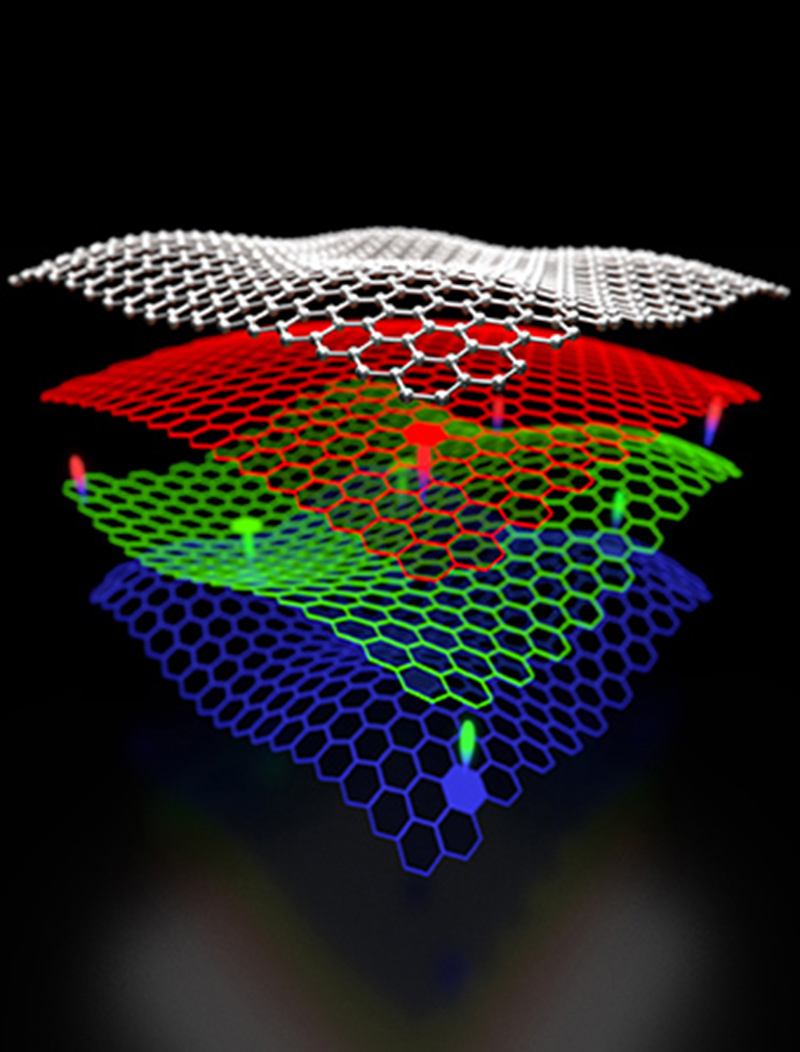Like drums in regular drum sets, graphene membranes at the nanoscale possess a distinct set of oscillating modes that correspond to specific oscillation frequencies. The modes can be excited by applying an external voltage.
In this study, published in Nature Nanotechnology, researchers from Cornell University and the University of Jyväskylä show that by applying an appropriate external force, a circular graphene membrane can be ‘played’ like a drum set.
The particular interest of this work lies in the fact that by exciting the system at a given frequency — i.e. by playing a certain note — the researchers were able to control the behavior of the membrane at a different frequency, amplifying, or suppressing its vibrations depending on the specific excitation conditions.

Pictorial view of the system: the graphene membrane (white) oscillates at three different frequencies. By exciting the central frequency mode (green) it is possible to transfer energy from the fundamental mode (blue) to the highest frequency mode (red), hence effectively cooling the former. Conversely, driving the highest mode (red) will lead to a transfer of energy to the central and fundamental mode (green and blue respectively), resulting in the amplification of the latter. Image: Courtesy of R. De Alba
Technically, this result was obtained by applying an external constant voltage to the graphene membrane and using the voltage as a “tuning peg.” This allowed to control the membrane tension and, as a consequence, engineer the coupling needed to control one oscillation mode by exciting the other. This coupling between different modes was made possible thanks to the exceptional mechanical properties of graphene, especially its incredible stiffness.
This discovery paves the way for the application of graphene mechanical resonators in telecommunication applications, for instance, as frequency mixers. Moreover, when cooled down to temperatures near the absolute zero, these resonators can play an important role in the detection of the faintest quantum signals and in the definition of new telecommunication technologies, in which the counterintuitive properties emerging at the quantum scale can lead to intrinsically secure exchange of information.
Source: University of Jyväskylä




